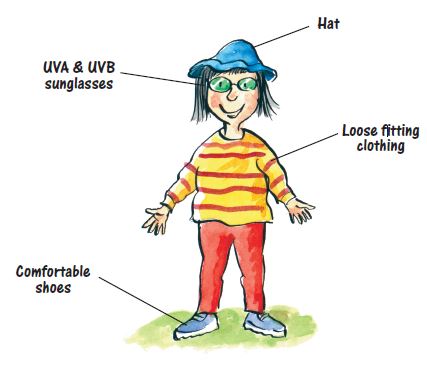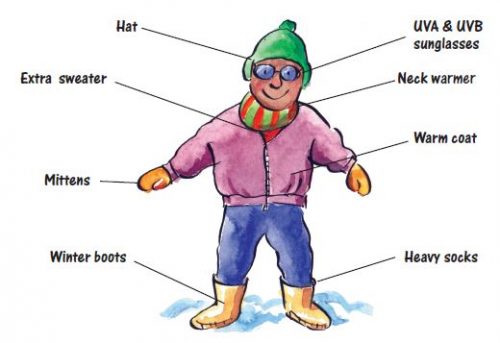Safety information for parents, caregivers or leaders about preventing injuries with children who are participating in sports, recreational activities or games from the Outdoors: The Ultimate Playground resource. An adult, leader or youth in charge should always make sure before starting a game that the play area is safe and that there is proper equipment, shoe wear and supervision.
When outdoors, encourage children to be sun safe and protect their skin.
Inspect the Play Area Before Starting Any Activity
- Walk over the entire play area checking carefully for things that may cause injury during play. Teach the children to help.
- Removal of hazardous objects (e.g. broken glass, hanging ropes, sharp objects, discarded needles, condoms, animal excrement, holes in the ground) is the responsibility of the adult.
Set Boundaries
- Review boundaries for safe playing areas and make sure players stay within the space.
- Set boundaries away from roads and free from cross traffic, both pedestrian and vehicular.
Proper Equipment
- Use equipment that suits the game and ability of all players.
- Play on a flat surface for skipping games.
- Keep all equipment in a good state of repair and with no sharp edges.
- Set rules for using ropes to help minimize the risk of injuries or problems. Help players understand the dangers of tying ropes to fences, equipment or other players. Supervise rope use.
- Avoid playing with balloons; they are not environmentally friendly and some children have allergies to latex.
- Set rules for using equipment safely; involve the players.
- Set guidelines for throwing/kicking balls (safe hit spots/zones – no hitting above the waist).
Clothing
- Wear clothing appropriate for the weather.
- See section on Getting Dressed.
- Games may need to be modified if children wear glasses or use assistive devices.
Body
- Always do warm-up exercises. Start with gentle muscle stretches.Then have children walk slowly at first, then faster so their heart rate increases.
- Help players stay well hydrated by having them drink a few gulps of water (every hour) before, during and after all activity.
Adequate Knowledge
- Before playing a game, review the rules. Decide as a group, all changes that will make the game fair for all players.This will help avoid potential conflict.
- Select activities that suit the ability level and skill sets of all the children playing. Modify games to provide a successful experience and a bit of a challenge.
Supervision
- Provide adequate, active adult supervision for all players according to their individual needs and the overall number of the children playing.
Getting Dressed
Summer days

Dressing properly for sunny, cloudy, hazy and foggy days will help prevent sunburns.
- Protect the skin – wear clothing that is light-coloured, loose fitting and tightly woven.
- Wear a hat with a wide brim or backflap to protect the head, face, ears and neck. Put on ultraviolet A (UVA) and ultraviolet B (UVB) protective sunglasses.
- Wear comfortable, soft soled shoes like sneakers, that are designed for active play.
Winter days

Dressing for the cold helps prevent the loss of body heat.
- Wear a hat that also protects the ears (40 – 50% of body heat is lost through the head).
- Add a neck warmer or scarf tucked into a coat.
- While playing the body perspires. Clothing gets wet and the body can become chilled when activity is slowed down. A layer of clothing that can be put on or taken off, as activity levels change, decreases the amount of sweating and minimizes chilling.
- Layer clothing by putting on an extra sweater, sweat-shirt or a t-shirt, long underwear or leggings under regular clothing. Top with a warm coat, snow pants and mittens or gloves.
- On windy days wear a windproof outer layer.
- Wear heavy socks and roomy winter boots with good treads.
- Remember to wear ultraviolet A (UVA) and ultraviolet B (UVB) sunglasses and sunscreen on sunny days, especially when there is snow.


